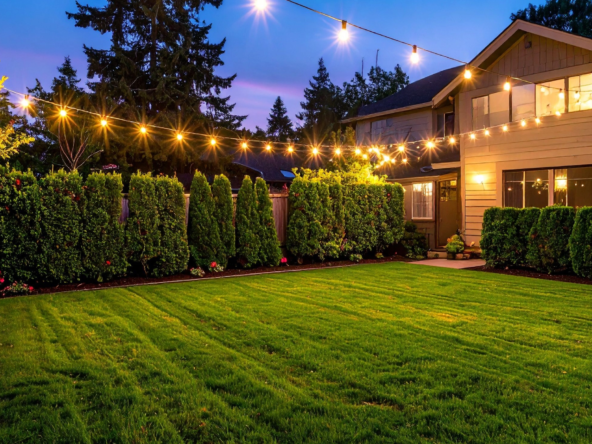TLDR
- Overpricing shrinks buyer pool, extends days on market, and reduces final proceeds.
- Eagle’s market rewards accurate pricing, with sale-to-list near 98 to 99 percent.
- The first two weeks drive most activity, so strategy and preparation are critical.
- Smart pricing plus staging and marketing outperforms discounts and long listing timelines.
What does pricing too high really mean in today’s Eagle market?
Eagle’s market has shifted from a rapid seller cycle to a more balanced pace, and that changes how pricing works. Recent local MLS data shows a median sale price around the upper $700s and a median of roughly 61 days on market, with about 2.8 months of supply in Eagle and near 3 months across Ada County. When buyers have more choices, they skim overpriced listings and concentrate on homes priced at or just below market value. The longer a home sits, the more buyers assume something is wrong.
A key signal is the sale. In Eagle, the typical home sells within about 1 to 2 percent of the asking price when correctly priced. That ratio tells us buyers will pay near market value for a well-positioned property, but they are not chasing aspirational numbers. Mortgage rate volatility, tracked by the Federal Reserve Bank of St. Louis, has also sensitized buyers to monthly payments, which magnifies any pricing misstep.
As an Eagle Idaho realtor, I watch these metrics daily and adjust quickly. Overpricing by as little as 3 to 5 percent can reduce showing traffic by a third, push your days on market well past the median, and ultimately cost more than a straightforward, market-right list price.
Here is how I define it as Chris Budka:
- Overpriced means 3 percent or more above the best comparable sales and active competition.
- Market-right pricing targets within 1 to 2 percent of current value to spark early urgency.
- Strategic pricing brackets your home relative to local inventory and buyer thresholds.
How does overpricing hit your bottom line and timeline?
Overpricing has a compounding effect. First, you miss the surge of early attention that happens when a new listing hits the market. Second, your listing accumulates days on market while competing homes go pending, creating a perception problem. Third, you often end up making one or more price reductions, which can signal distress and invite lower offers. In many cases, a home listed 5 percent above market ends up selling 5 to 7 percent below its original list after reductions and negotiation.
Local MLS and Ada County Association of REALTORS data shows Eagle’s supply hovering under 3 months and a median days on market around 61. That means well-priced homes are selling, but buyers scrutinize value carefully. If buyers are typically paying about 98 to 99 percent of asking when a home is correctly priced, listing 5 percent too high likely puts you out of the strike zone. You are effectively making your home look older on the market and less competitive against fresh listings.
Citations you can trust: For county-level trends and monthly snapshots, I rely on the Ada County Association of REALTORS. For interest-rate context and buyer payment sensitivity, I track 30-year mortgage rates on FRED. For broader price appreciation context, I consult the FHFA House Price Index to compare local patterns with statewide and national movement.
Why the first 14 days matter
Most showings and serious inquiries occur in the first two weeks. That window is your best chance to generate multiple interested buyers. If you price too high, you squander the prime exposure period and then have to fight uphill. A price correction later rarely creates the same momentum as starting in the sweet spot day one. Learn how to improve the odds of an offer.
Which neighborhoods illustrate the pitfalls and opportunities in Eagle?
Pricing nuances vary by neighborhood. As an Eagle ID real estate agent, I tailor strategy to micro-markets near our office at 408 S Eagle Rd, Suite 205, close to the Boise River corridor and central amenities.
- Island Woods
– Details – Waterfront paths, mature landscaping, easy access to the greenbelt and downtown Eagle. – Watchouts – Unique lot positions and water features complicate comps; appraisals hinge on micro-location. – Typical timeline – Market-right pricing often sees 30 to 45 days to pending; overpricing can stretch 60 to 90.
- Two Rivers
– Details – Luxury homes with water features, community amenities, and close-to-town convenience. – Watchouts – Wide price band from executive to ultra-luxury requires precise comp selection and staging. – Entry-level path – Price strategically at the lower third of your tier to pull up demand rather than chase it.
- Legacy
– Details – Master-planned golf and lake community with new and resale inventory across several phases. – Watchouts – New-construction incentives set buyer expectations; resale homes must compete on value and condition. – Typical timeline – Clean, move-in-ready listings priced within 1 to 2 percent of market often go pending in 35 to 50 days.
- Wedgewood Estates
– Details – Established community with larger lots and custom features, near key Eagle corridors. – Watchouts – Renovation quality varies; pricing must reflect updates, not wishful thinking. – Entry-level path – Cosmetic refresh plus strong photography bridges the gap to newer competing homes.
In all four, buyers gravitate to move-in ready properties that are priced within market bounds. When you bring an Eagle Idaho home for sale into these neighborhoods with the right pricing, you draw the widest audience during the critical launch period.
What are the pros and cons of pricing high versus pricing market-right?
Pros:
- Testing the top of the range may capture an outlier buyer if supply is extremely tight.
- Creates room to negotiate if you know multiple buyers are circling your segment.
- Can work for truly one-of-a-kind properties when a strong appraisal case exists.
Cons:
- Fewer showings, longer days on market, and eventual price cuts erode perceived value.
- Appraisal risk increases if you are above verifiable comps, reducing financing certainty.
- Carrying costs continue while you wait, which eats into your net proceeds.
How do I price and prepare to avoid costly overpricing?
Start with a data-driven Comparative Market Analysis using current and pending comps from our Intermountain MLS. I pair that with on-the-ground competition checks and a buyer threshold review. For example, in Legacy and Two Rivers, small list-price increments around $25,000 can move you in or out of key search brackets. A meticulous pre-list plan usually includes:
- Pre-inspection: $400 to $600 in Eagle for a standard report identifying deal-killers.
- Staging focus: $1,500 to $4,000 targeted to kitchen, living, and primary suite.
- Paint and punch list: $1,000 to $3,500 for neutral paint, caulk, grout, and light fixtures.
- Pro photography and 3D tour: $300 to $600 to maximize online appeal.
- Timeline: 10 to 21 days prep, then 30 to 45 days to pending if priced right.
One of my clients in Island Woods wanted to list 5 percent above market after seeing a neighbor sell high in spring. We reviewed fall comparables, rising months of supply, and buyer payment sensitivity. By pricing within 1.5 percent of value, we generated 16 showings in 10 days and accepted a strong offer at 99 percent of list with minimal concessions.
Another client in Legacy had excellent upgrades but faced new-build competition with incentives. We priced competitively, offered a modest closing credit, and highlighted upgrades the builder was not including. Showings were steady, and we went pending in 32 days at near full price, beating similarly sized homes that lingered after starting too high.
To stay aligned with schools and commuting priorities, I include location context in the CMA such as proximity to Eagle High, Eagle Middle, and commuting routes to Boise via State Street or SH-16. Resources like the West Ada School District boundary maps, City of Eagle planning updates, and Valley Regional Transit On-Demand help us message lifestyle advantages that justify market-right pricing.
FAQs
1) How much above market can I list without hurting my results? The strongest results typically come from pricing within 1 to 2 percent of verified market value. In Eagle, buyers usually pay near 98 to 99 percent of ask when homes are correctly priced. Listing 3 percent high starts to suppress showings, and 5 percent high can double your days on market. The exception is a truly unique property that we can support with compelling comps and feature adjustments.
2) How long should I wait before making a price adjustment? If traffic is light in the first two weeks and feedback points to price, move quickly. The first 14 to 21 days are the most valuable. I prefer small, decisive price adjustments that align with buyer search brackets rather than multiple small reductions. If a home sits beyond 45 days without strong offers, we should reassess price, presentation, and incentives as a bundle.
3) Do improvements justify a higher price or just a faster sale? Both, if improvements match buyer preferences in the neighborhood. A refreshed kitchen, updated lighting, and clean paint can increase perceived value and reduce time on market. However, over-improving relative to nearby comps rarely nets dollar-for-dollar returns. We will quantify likely returns in your CMA and price to capture value without overshooting appraisal support.
4) What if a cash buyer comes in below list early on? Cash can remove appraisal and financing risk, which has real value. If the offer is within a couple percent of your target and the timeline matters, it may be worth accepting. If not, I will leverage the early interest to bring in competing buyers. The best realtor in Eagle Idaho knows how to weigh certainty, timing, and net proceeds.
5) How do interest rates affect the right list price? Higher rates reduce purchasing power, shrinking the pool at each price band. That makes precise pricing more important, because small list-price differences can bump buyers into a higher monthly payment. I monitor mortgage rates via FRED and adjust pricing and incentives accordingly, including credits to buydown rates when it improves net proceeds.
6) Is FSBO a way to net more in this market? Some FSBO sellers save commission but often sell for less than agent-listed homes due to limited exposure, negotiation bandwidth, and paperwork risks. In a balanced market, targeted marketing, staging guidance, and negotiation can more than offset commission. A seasoned Eagle ID real estate agent who launches with market-right pricing typically shortens days on market and protects your net.
Conclusion
The bottom line Overpricing in Eagle is not a harmless experiment. It reduces showings, extends your timeline, and often nets less after reductions and concessions. The first two weeks are precious, and the data is clear that market-right pricing paired with standout presentation generates stronger offers. As your Eagle Idaho realtor, I use MLS analytics, neighborhood expertise, and a proven launch plan to position your home in the sweet spot. If you are home selling in Eagle Idaho, let’s align on the right price and go to market with confidence.










